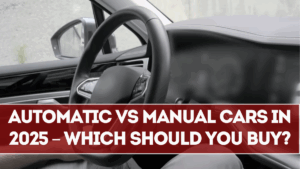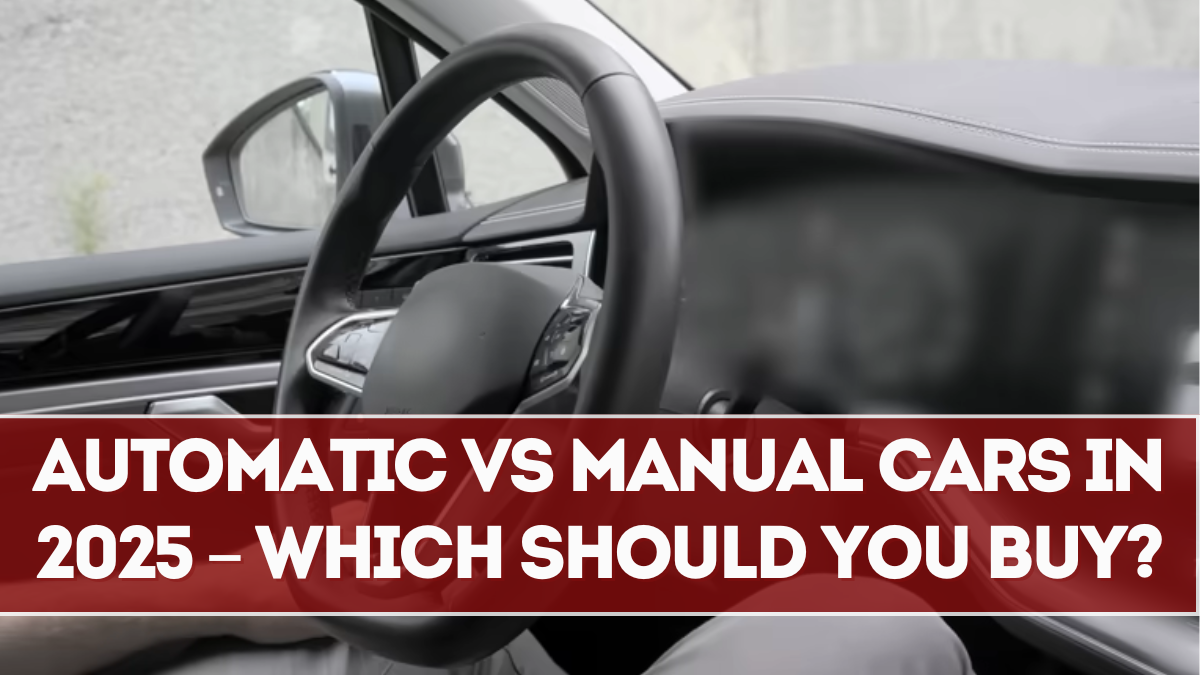The debate over automatic vs manual cars has been a long-running one in India. With new models, changing fuel costs, and stricter emission rules, many car buyers are asking, which is better 2025—automatic or manual? The answer depends on your driving habits, budget, and long-term plans.
As of September 2025, automatics have gained significant traction in India’s urban markets, while manuals still dominate in smaller cities and rural areas. Let’s break down the pros and cons of both options so you can make an informed decision.

Market Trends in 2025
The Indian car market has seen a major shift in buyer preferences:
-
Automatic cars now account for 35% of total sales, a sharp rise compared to 15% five years ago.
-
Manual cars still dominate in Tier-2 and Tier-3 cities due to lower costs.
-
Automakers like Hyundai, Maruti, and Tata are offering AMT (Automated Manual Transmission) versions even in entry-level cars.
-
Premium SUVs and sedans are now mostly automatic, while budget hatchbacks continue to be manual-first.
This shows that the which is better 2025 debate is heavily influenced by geography, usage, and budget.
Advantages of Manual Cars
Manual cars continue to attract buyers for several reasons:
-
Lower upfront cost – Typically ₹50,000–₹1 lakh cheaper than their automatic counterparts.
-
Better fuel efficiency in highways – Manuals often deliver higher mileage on long drives.
-
Control and driving feel – Enthusiasts prefer manuals for greater control over gear shifts.
-
Cheaper maintenance – Repair and servicing costs are generally lower.
-
Resale in rural areas – Manuals retain value better outside metro cities.
This makes manuals ideal for budget-conscious buyers and those who frequently drive on highways.
Advantages of Automatic Cars
Automatics are quickly becoming the preferred choice for urban buyers:
-
Ease of driving – Perfect for stop-and-go traffic in cities.
-
Advanced tech – Modern automatics come with smoother gear shifts and multiple drive modes.
-
Safety – Automatics with hill-hold assist and creep function reduce the risk of rollbacks.
-
Fuel efficiency improvements – CVT and DCT automatics now deliver mileage similar to manuals.
-
Premium appeal – Automatic is now seen as a standard for mid-range and luxury cars.
In the which is better 2025 comparison, automatics are winning over younger buyers and city commuters.
Cost and Mileage Comparison
The biggest deciding factors remain cost and mileage:
| Aspect | Manual Cars | Automatic Cars |
|---|---|---|
| Price | Lower, more affordable | Higher by ₹50,000–₹1 lakh |
| Mileage (City) | 12–15 km/l | 14–16 km/l (AMT/CVT) |
| Mileage (Highway) | 18–22 km/l | 16–20 km/l |
| Maintenance | Lower cost | Slightly higher due to complex gearbox |
| Driving Comfort | More effort in traffic | Stress-free, especially in cities |
Clearly, manuals still lead in affordability, while automatics win in convenience.
Which Type of Driver Should Choose What?
The which is better 2025 decision depends on your profile:
-
City commuter – Automatic (AMT, CVT, or DCT) for comfort in traffic.
-
Highway driver – Manual for better mileage and control.
-
First-time buyer – Manual, as it’s cheaper and simpler to maintain.
-
Premium buyer – Automatic, since most mid-range and luxury cars now come with auto gearboxes.
-
Resale-focused buyer – Manual in rural areas, automatic in metros.
The Future of Automatic vs Manual in India
-
Automatics will dominate metros – By 2027, automatics may account for nearly 50% of sales in Tier-1 cities.
-
Manuals will remain relevant – Rural buyers and fleet operators will continue to prefer manuals.
-
Hybrid and EV influence – Most EVs and hybrids are automatic-only, shifting trends further towards automatics.
-
Government policies – With BS7 norms, automatics with smart gear management may become more fuel-efficient.
Thus, while manuals remain relevant, automatics are clearly the future.
FAQs
Which is better in 2025, automatic or manual cars?
It depends on your usage—automatic for city driving, manual for highways.
Are automatic cars more fuel-efficient in 2025?
Yes, modern AMT, CVT, and DCT automatics now deliver fuel efficiency similar to manuals.
Do automatic cars cost more than manuals?
Yes, automatics are typically ₹50,000–₹1 lakh more expensive than manual variants.
Which car type has better resale value in 2025?
In metros, automatics have higher resale; in rural areas, manuals still dominate resale markets.
Will manuals disappear in India?
Not in the near future—manuals remain strong in affordable segments and rural demand.
Click here to know more.
